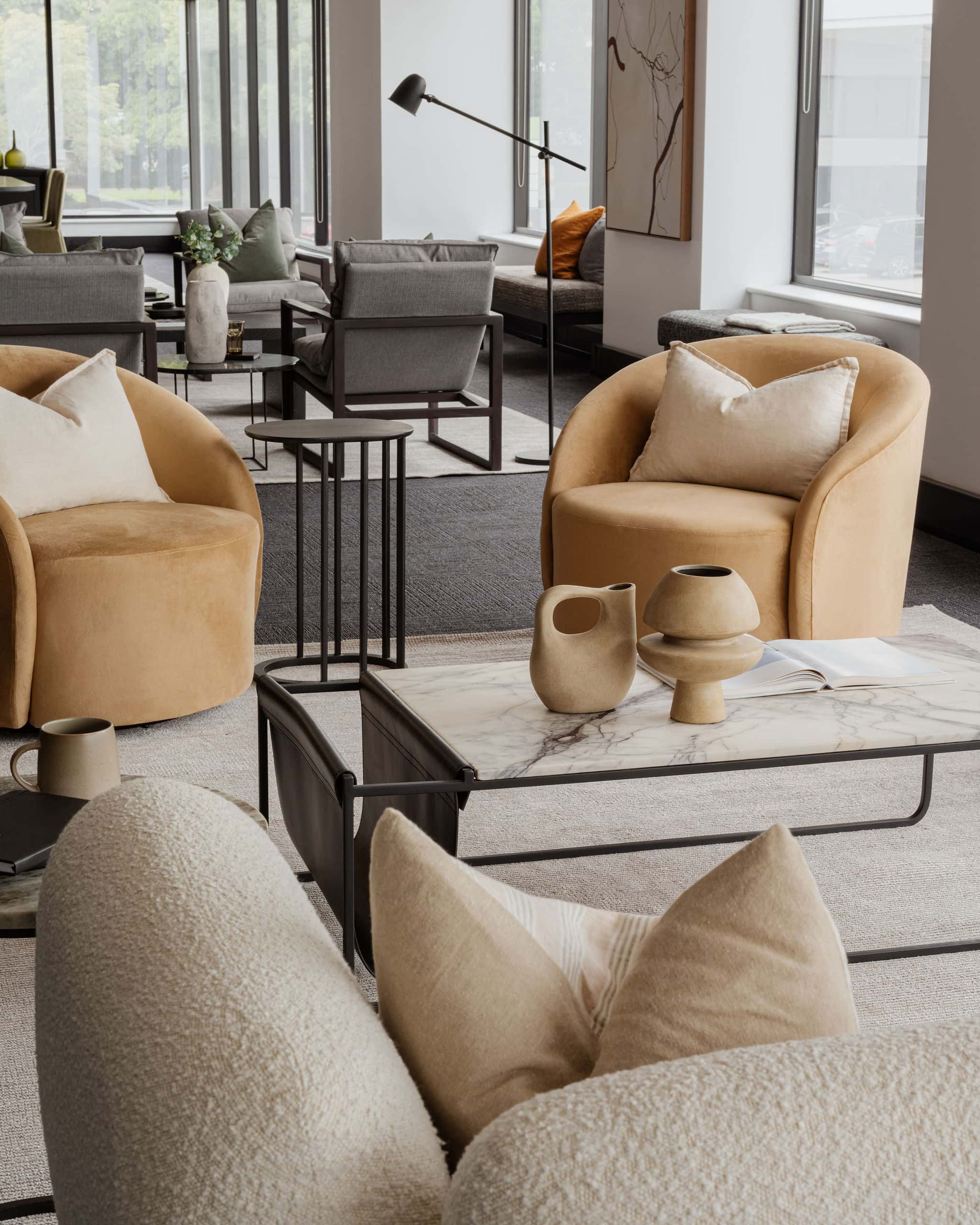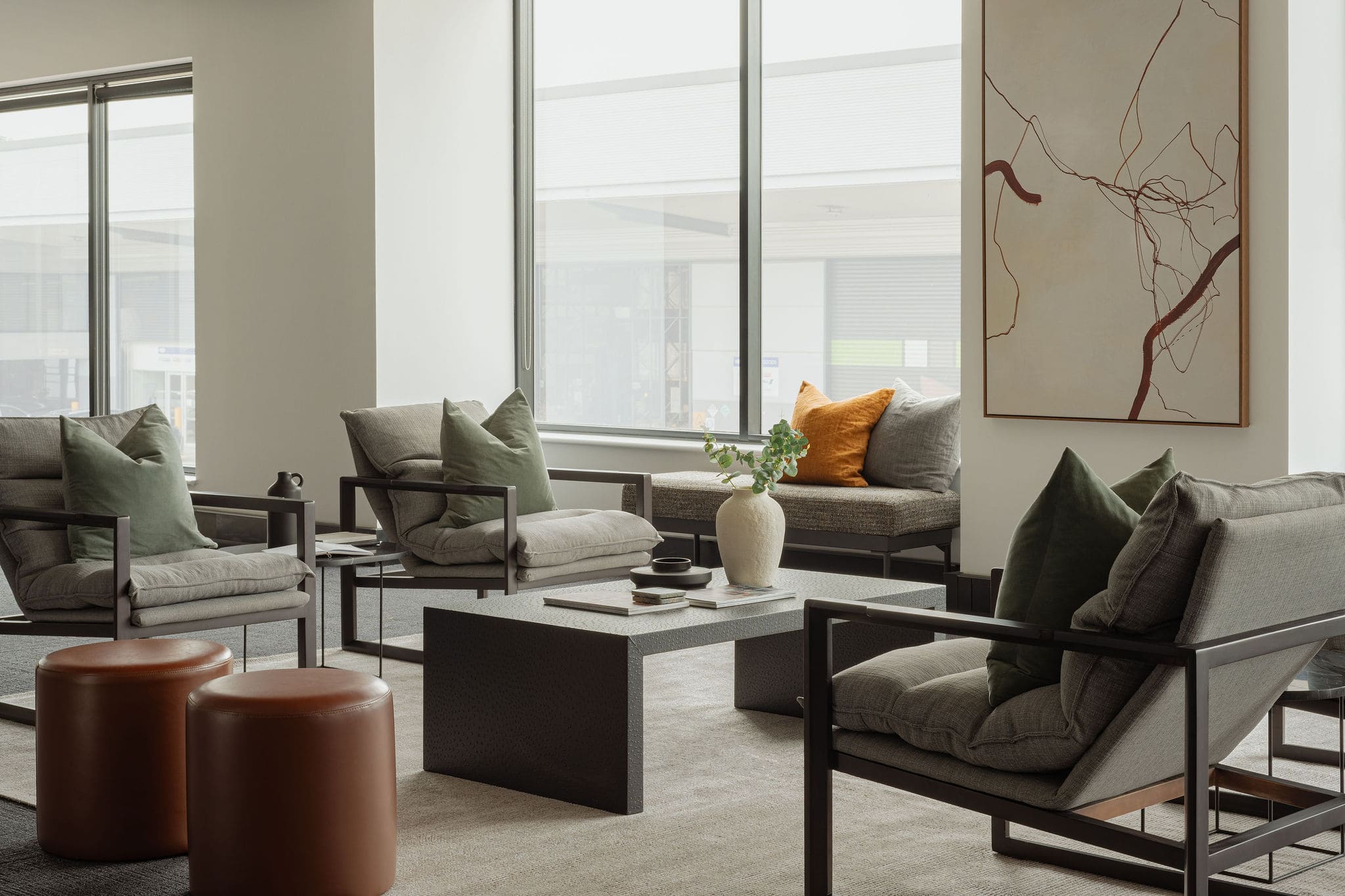The Future of Workspace Design
As the way we work continues to evolve, so does the design of our workspaces. No longer just places to complete tasks, offices are becoming environments that foster creativity, collaboration, and well-being. Whether you’re redesigning your company’s headquarters or creating a home office, here are the key trends shaping the future of workspace design.
Flexible, Adaptive Spaces
With the rise of remote and hybrid work, flexibility is key. Modern workspaces are being designed to adapt to a variety of needs—whether it’s collaborative group work, private focus time, or virtual meetings. Movable walls, multi-functional furniture, and modular layouts allow businesses to shift their space to accommodate different working styles and needs, providing a versatile environment for productivity and creativity.

(Goodman x Lidcombe)
Biophilic Design
Biophilic design, which incorporates elements of nature into the workplace, is becoming increasingly popular. Studies show that bringing natural light, plants, and organic materials into an office boosts employee well-being and productivity. Whether it’s through large windows, indoor plants, or natural materials like wood and stone, integrating nature into your workspace can significantly improve the mood and productivity of your team.
Collaborative/Breakout Zones
As offices become more flexible, there’s a greater focus on designing spaces that encourage collaboration. Open areas with comfortable seating, whiteboards, and flexible tables are ideal for brainstorming sessions and team meetings. These zones help facilitate communication and idea-sharing, creating a more dynamic and interactive work environment, empowering teams to work effectively and creatively.

Wellness-Centred Design
Employee well-being is becoming a priority in modern office design. From ergonomic furniture to quiet rooms for relaxation or mindfulness, workspaces are being designed with mental and physical health in mind. Incorporating features like standing desks, meditation spaces, or even in-office gyms promotes a culture of wellness and shows employees that their health is valued.
Home Office Integration
With remote work now a permanent part of many industries, home offices have become a crucial aspect of workspace design. Today’s home offices are designed to be both functional and stylish, incorporating ergonomic furniture, tech-friendly setups, and personalised touches that reflect individual work habits.
The future of workspace design is centred around flexibility, well-being, and connection. At BOWERBIRD, we have experience styling and designing both commercial office spaces and home offices that balance aesthetics, comfort and productivity. Ready to design the workspace of tomorrow? Contact us today.